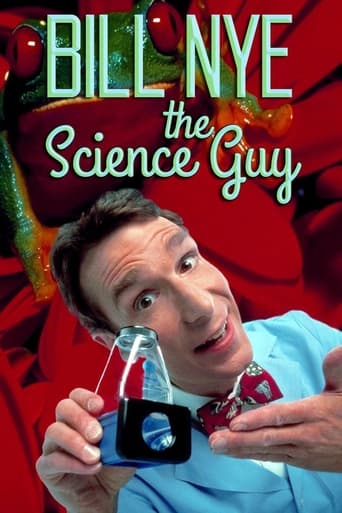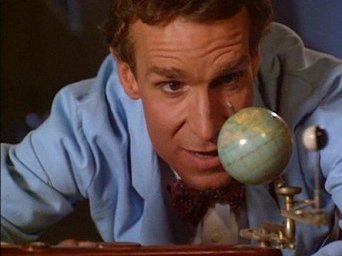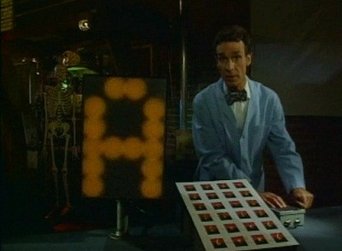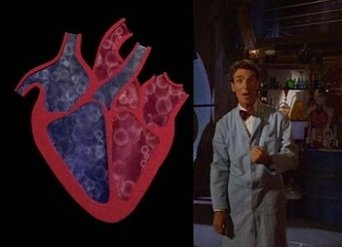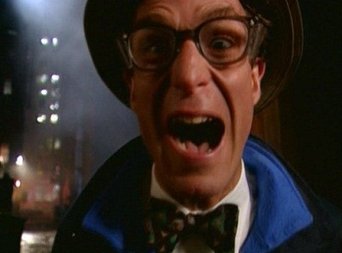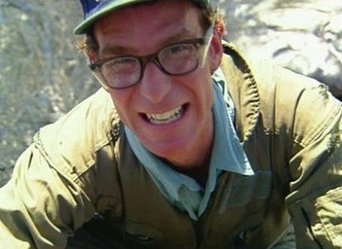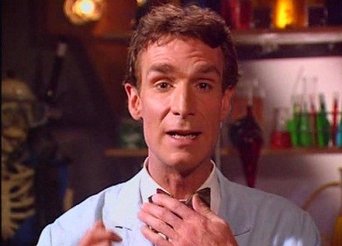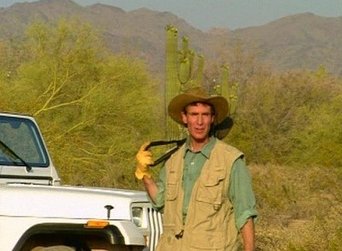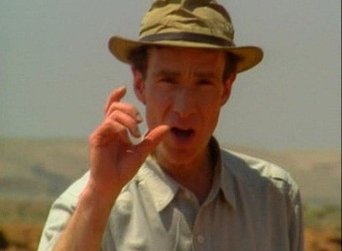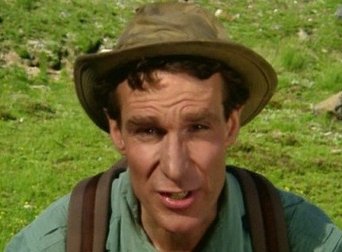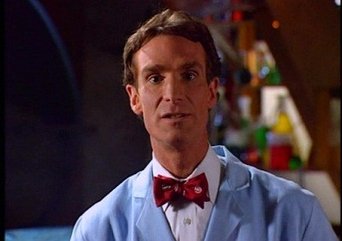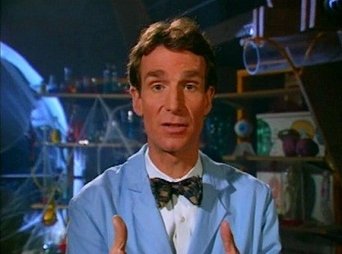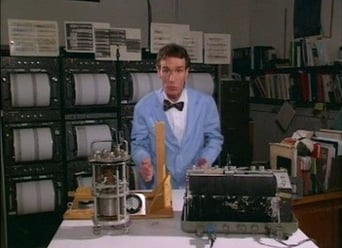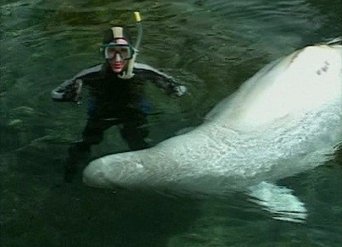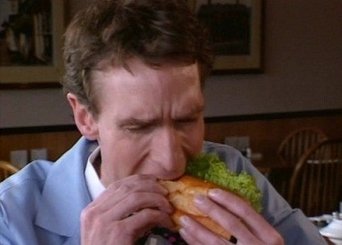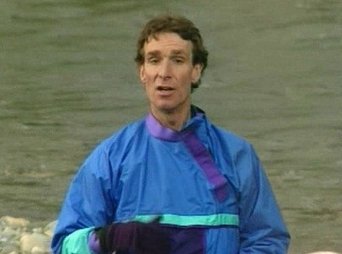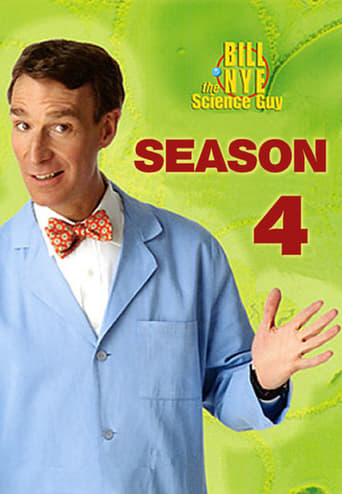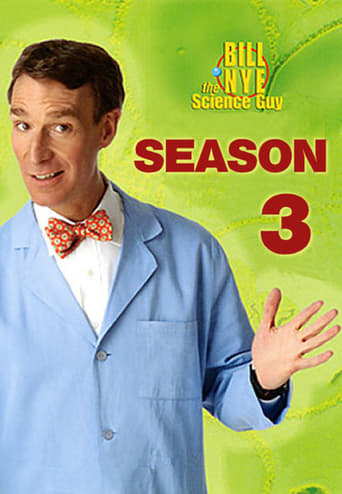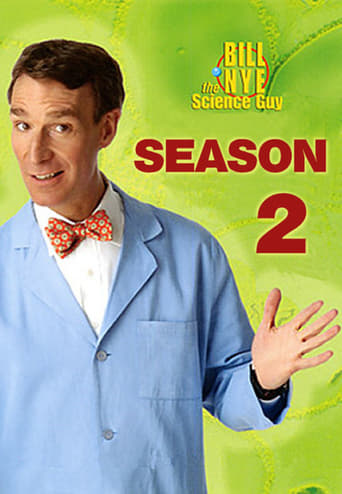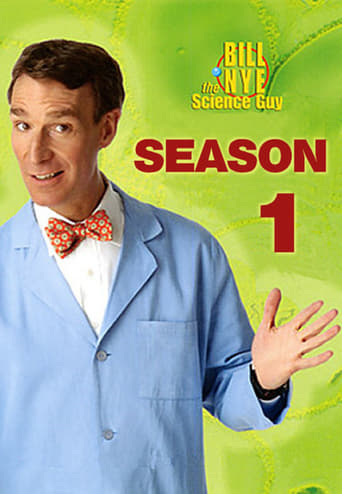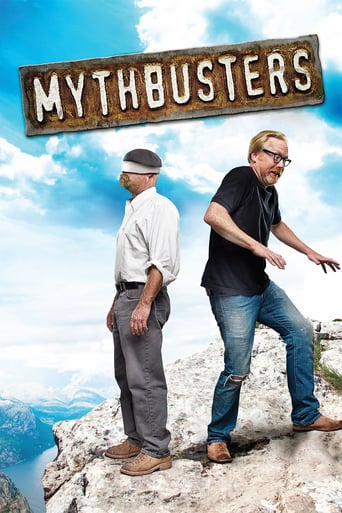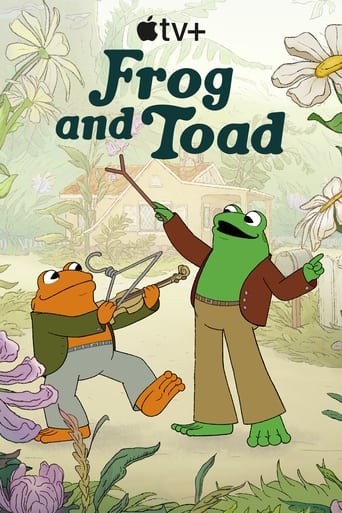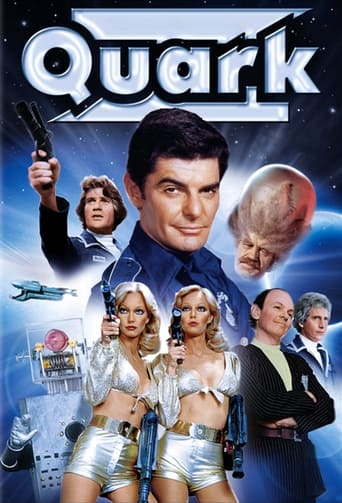Bill Nye the Science Guy Season 4
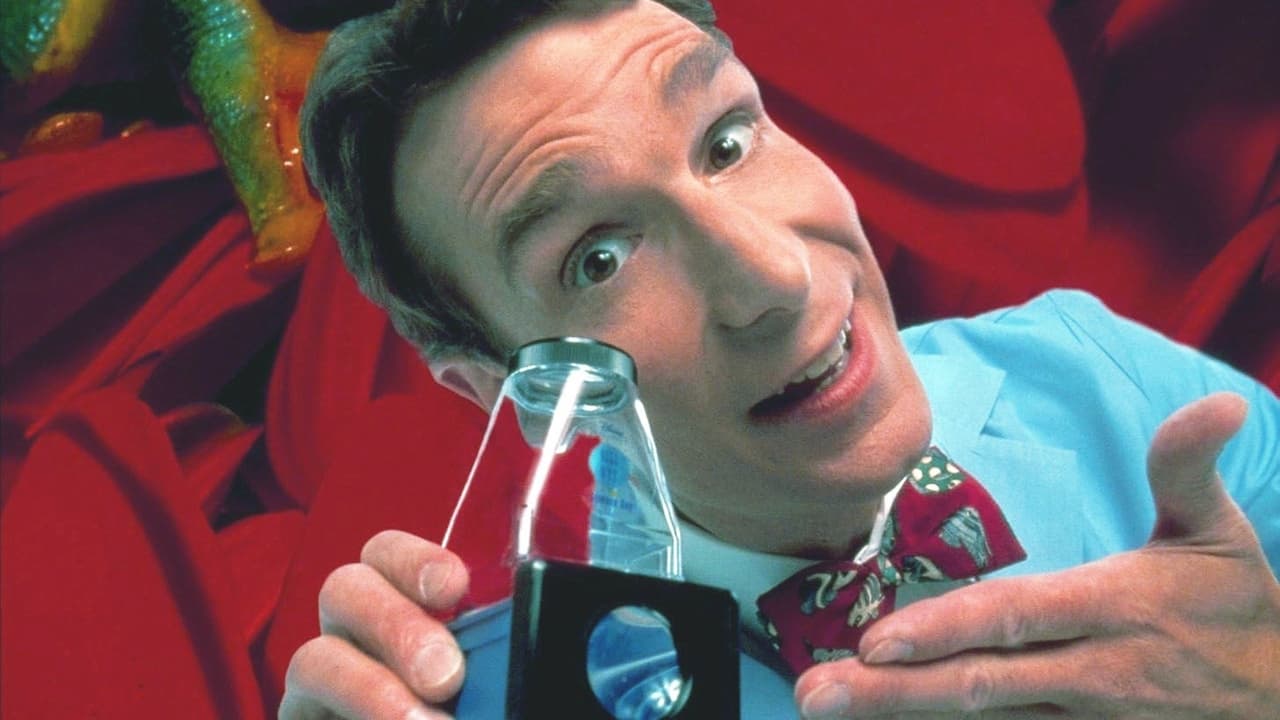
It's "Mr. Wizard" for a different decade. Bill Nye is the Science Guy, a host who's hooked on experimenting and explaining. Picking one topic per show (like the human heart or electricity), Nye gets creative with teaching kids and adults alike the nuances of science.
Watch NowWith 30 Day Free Trial!
Bill Nye the Science Guy
1993 / TV-Y
It's "Mr. Wizard" for a different decade. Bill Nye is the Science Guy, a host who's hooked on experimenting and explaining. Picking one topic per show (like the human heart or electricity), Nye gets creative with teaching kids and adults alike the nuances of science.
Watch Trailer
With 30 Day Free Trial!
Bill Nye the Science Guy Season 4 Full Episode Guide
Time affects every living thing on Earth. Trees shed their leaves. Some animals only come out at night. There are even insects that only emerge every 17 years. Days, hours, minutes, and seconds – all of these were invented by humans. Humans came up with these units of time to organize their lives and to study the world. One of the first ways humans told time was by noticing the difference between daytime and nighttime. Humans use the Earth revolving around the Sun to divide time into years and seasons. Months are based on the movement of the Moon around the Earth. A day is when the Earth spins completely around its own axis.
Most dead animals and plants break up, get decomposed, and become part of the soil, but some turn into fossils. A fossil forms when a plant or animal dies, and gets buried. If conditions are right, water gets into the fossil bed, and chemical reactions preserve the impressions for thousands or millions of years. There are different types of fossils — imprints of animals, black carbon outlines, hardened bones, or actual animals and plants that have been trapped in ice or hardened tree sap.
With special guest, Mick H. Computers are used throughout the world all the time. Computers are in cars, calculators, televisions – you’re even using one right now. Humans use computers to take information – things like pictures, words, numbers, and sound, and turn it into electricity. The information is changed into a pattern of electrical pulses, a bunch of electricity “ons” and “offs.” The computers are designed so that they can tell the difference between pieces of information by the different patterns of “ons” and “offs.” Computers change the information you give them, turn it into electrical pulses, make changes to it, and give it back to you in a form you can understand in a matter of thousandths of seconds. It’s not the computers, it’s the electricity that makes computers so fast.
Almost everything around you, from paper clips to computers, was thought of, designed, and built by humans. An invention can be a totally new idea, or an improved variation on something that already exists. Inventors invent to solve problems and make life easier. Anyone can be an inventor, even you. All you need is an idea, and sometimes you don’t even need that. Silly Putty, sticky notes, X-rays, pretzels and nylon were all accidents that became great inventions after more research, experimentation, and design.
Your heart pumps your blood around your body, all hours, every day of the week, to keep you alive. Your heart is about the size of your fist, and it’s made of special muscle called “cardiac” (KAR-dee-ak) muscle. Cardiac muscle lets your heart keep the beat, it can also speed up or slow down, depending on what your body needs. Your heart works like an automatic pump – it squeezes, or contracts, and un-squeezes, or relaxes, to push blood through the four different sections of your heart. Valves, special one-way openings, are like little doors between the sections – making sure your blood moves in only one direction through your heart, to your lungs, back to your heart, and then around your body again.
Worms, squid, clams, and flies are spineless creatures. They’re not afraid, they’re invertebrates – animals that don’t have backbones. Invertebrates are everywhere. You can find invertebrates in the sea, in freshwater, and on land. There are about 30 times more invertebrates than vertebrates on Earth.
Volcanoes are mountains made from molten rock. The Earth’s crust is divided into big slabs, called plates, which are slowly moving all the time. The plates are floating on the Earth’s mantle, a layer of gooey hot rock that flows like maple syrup. Some places in the mantle, the rock gets very hot and nearly liquid. It’s called magma. Sometimes the magma reaches the Earth’s surface and forms a volcano.
Frogs, toads, salamanders, newts, and caecilians (worm-like animals that have backbones) are all amphibians, animals that spend part of their lives in water and part on land. Amphibians are slimy. Amphibians are cold-blooded that means their body temperature changes with the temperature outside. And as amphibians grow up, they go through metamorphosis.
About 20% of the Earth is a desert. Deserts are places that get very little precipitation (rain or snow) each year, and that makes them extremely dry. Deserts cover big areas of land. The biggest desert, the Sahara, extends from North Africa to Southwest Asia and is 13 times the size of Texas. Some parts of the Sahara get as little as 2 millimeters (0.08 inches) of water a year.
Archaeologists are kind of like detectives. They’re scientists who snoop through old or ancient people’s things to find out what life was like thousands of years ago. Archaeologists find ancient cities, tombs, and temples by taking aerial photographs of Earth, by reading old documents, or by just looking at the shape of the land. When they think they’ve found a site, the archaeologists pick up a shovel and start digging. When archaeologists get close to an object, they dig very carefully. Sometimes they dig with nothing but a toothpick and a paintbrush. Whew!
Flowers are an important part of many plants. Plants use flowers to make other plants – to reproduce. Flowers have special parts, called stamens and pistils. When pollen from the stamen finds its way down through the pistil, the flower is pollinated, and seeds start to grow. The seeds eventually find their way to the ground, the seeds sprout, and more plants are born.
People once thought that world was flat or nearly flat. It was considered a bit crazy to think of it as a big ball. But it is. You can prove it. One of the big ideas in science is that ideas can be tested. Scientists test claims. If one scientist claims that she or he can fill a balloon with invisible gas using vinegar and baking soda, other scientists can try it and see if they get the same result. Sometimes ideas are wild, extraordinary. And, the claims that go with these way-out ideas are pretty extraordinary as well. The round Earth is an example of an extraordinary claim that needed extraordinary proof. But, there are many people, who believe in extraordinary claims without looking for extraordinary proof. We scientists are always on the lookout. Sometimes ideas are wild, extraordinary. And, the claims that go with these way-out ideas are pretty extraordinary as well. The round Earth is an example of an extraordinary claim that needed extraordinary proof.
Probability is a way to measure how likely it is that something will happen. Probabilities are predictions. They’re often just very careful guesses. When a scientist wants to calculate a probability, she or he gathers data and then uses the data to make her or his guess. Probabilities are between 100% (it’s definitely going to happen) and 0% (forget about it, pal, it’s not going to happen). Most things have a probability somewhere in between.
Dirty water, land, and air are a result of pollution. People are the only animals on Earth that make pollution. Garbage, burning fuel, chemicals, sewage, oil, and pesticides are all human-made things that make the Earth’s atmosphere, water, and soil unclean. Humans are even leaving trash in space, such as broken satellites, pieces of metal, paint from rocket skin, and even cameras and toothbrushes. Much of the junk people make and leave behind hurts plants, animals, you and me.
Be sure to get this straight: spiders are not insects, they’re arachnids. Spiders have eight legs, and insects have only six. Spiders have two body parts, a head and an abdomen, while insects have three body parts, a head, a thorax, and an abdomen. Insects have antennae, and spiders do not. Some insects sting. All spiders have fangs and venom. There are almost certainly a few spiders in the room with you right now.
Join Bill Nye as he counts down the hits from the Soundtracks of Science. Along with the music, Bill does a few new experiments on the lab bench. You’ll see the grunge band Nyevana’s classic “Air Pressure,” Momentisey’s “The Faster You Push Me,” and divas En Lobe’s “Whatta Brain.” There’s even a special appearance by Mudhoney, a real band from Seattle. But if you want to know who’s the number one artist from Not That Bad Records, you’ll have to tune in.
Earthquakes happen when pieces of land in the Earth’s crust scrape together. The crust of the Earth is made of big slabs of land called plates that are constantly moving just a little bit. The plates scrape by one another, and sometimes they don’t move smoothly. An earthquake happens when the plates get unstuck suddenly and jerkily slip past each other. The majority of earthquakes occur along plate boundaries such as the boundary between the Pacific Plate and the North American plate. One of the most active plate boundaries for earthquakes is the massive Pacific Plate commonly referred to as the Pacific Ring of Fire. The fire comes from the volcanoes that form near the edge of the plates.
Whales, dolphins, otters, walruses, and orcas are just like us, they’re mammals. Well, they’re not just like us. They live in the ocean. They breathe air, have hair, nurse their babies, and they are warm-blooded. They keep the same body temperature all day. To do that in the ocean isn’t easy. Water soaks up heat, so the ocean is really pretty cold. Marine mammals have all sorts of ways to keep warm. Whales, dolphins, and walruses have thick layers of fat called “blubber.” It’s great insulation. It holds their body heat keeping them warm in the cold ocean. Sea otters have thick layers of fur that cover their whole bodies. Otters fluff their fur to trap air between the hairs. It helps them float, it the air keeps them warm even when they dive deep hunting for food. These adaptations make it possible for marine mammals to live all over the world’s oceans.
All food, whether it’s protein, fat, carbohydrates, vitamins, or minerals, is made of chemicals. When your body gets a hold of these chemicals, it recombines them and makes energy. Different types of food make different amounts of energy, which are measured in calories. How do scientists figure out the amount of calories in food? In this episode, Bill will reveal the secrets of the bomb calorimeter – an instrument of food science.
Water is massive; rivers are powerful. As rivers flow downhill, they wear away rock and soil to form canyons or winding curves in the land, called meanders. Sometimes rivers fill and overflow their banks. Rivers with too much water create floods that can carry away plants, trees, buildings and boulders. Rivers and streams support most of the ecosystems on land.
Free Trial Channels
Seasons


